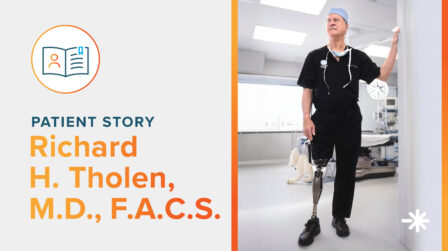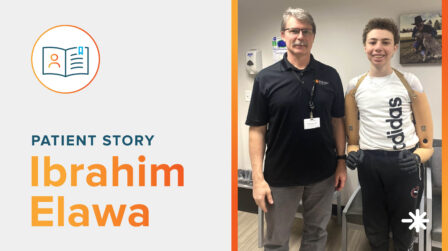Understanding Clubfoot
Clubfoot is a genetic condition that is estimated to affect approximately 1 of 750 children. Also known as talipes equinovarus (TEV), clubfoot occurs when one or both feet are pointed inward and downward. The affected foot is often smaller than the unaffected side.
Diagnosis
Clubfoot is often diagnosed during a prenatal ultrasound. In about 10 percent of cases, it can be seen as early as 13 weeks. By 24 weeks, it has been diagnosed in about 80 percent of cases. Depending on the severity, clubfoot can impact the child’s ability to walk, thus impacting mobility development.
Associated Foot Conditions
Metatarsus adductus, also known as metatarsus varus, causes the front half of the foot, or forefoot, to turn inward.
Vertical talus, also known as congenital vertical talus (CVT), is a rare foot condition that presents as an extreme case of flatfoot.
Talar coalition is the fusion of two or more bones in the mid and hindfoot. It is usually diagnosed in older children or adolescents and may cause painful flatfoot.
Treatment
Treatment for clubfoot and other many other associated foot conditions typically begins shortly after birth. It is usually successfully treated without surgery, using a combination of stretching, casting, and bracing, though sometimes children may need follow-up surgery later on.
More specifically, your doctor may decide to use a casting procedure called the Ponseti Method that gently increases corrective positioning.
Following both non-surgical and/or surgical correction, your physician may choose to prescribe lower limb braces to correct foot position, shape, and functional use.
1. Ponseti IV, Smoley EN. Congenital Club Foot: The results of treatment/ J Bone Joint Surg [1963:45-A:261-344 | 2. Cooper DM, Dietz FR, Treatment of Idiopathic Club foot. 1995 | 3. Laaveg SJ, Ponseti IV Long Term results of treatment of congenital Club foot. 19804. | 4. Ponseti IV. Congenital Club Foot: Fundamentals of treatment. 1996 | 5. Zhao D, Liu J. Zhao L, Wu Z. Relapse of Club foot after treatment with the Ponseti method and the Function of the foot abduction orthosis | 6. https://www.ncbi.nlm.nih.gov/pmc/journals/
Latest Updates
Subscribe to stay up-to-date on our latest posts.


